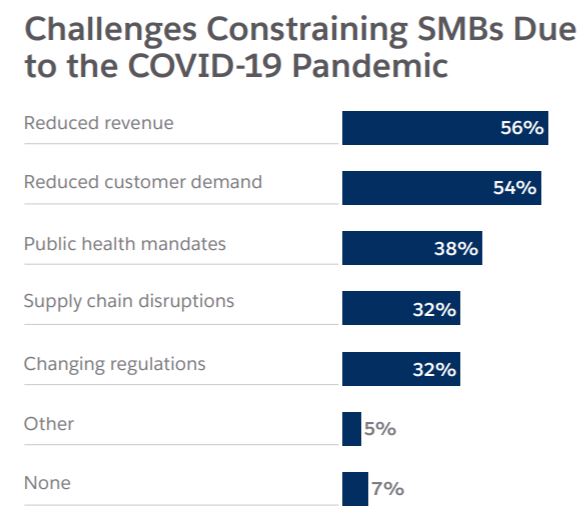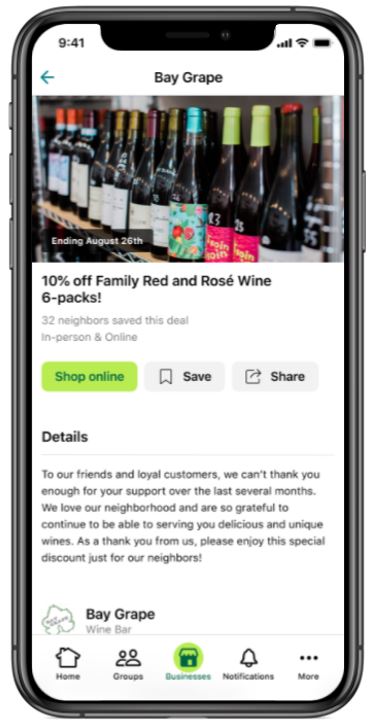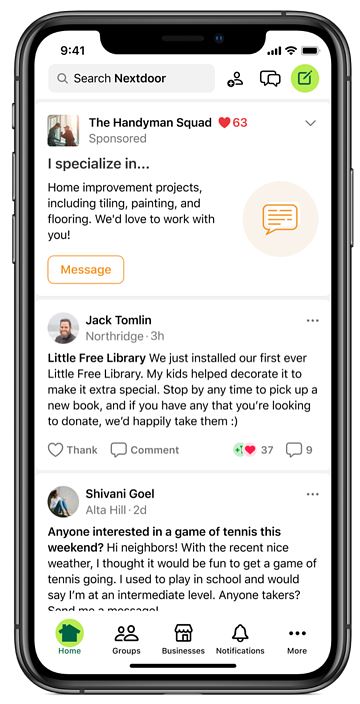30-second summary:
- Nextdoor is a social media network for neighborhoods that reaches over 248,000 neighborhoods in 11 countries.
- In the second installment of our two-part series about Nextdoor, we focus on how the platform fits into your overall SMB social media strategy.
- One of the ways SMBs have adapted to the uncertainty of 2020 is by expanding the way customers can reach them.
- In 2020, over a third of businesses are prioritizing developing customer relationships over time, versus one-time transactions.
- Businesses can get started building a presence on Nextdoor by creating a Nextdoor Business Page which is free. There are two paid advertising opportunities, Local Listings and Neighborhood Sponsorships, both of which are extremely affordable and enable businesses to benefit from the social nature of the platform.
Even before this disastrous year, small business marketing budgets were tight. A 2018 survey by Clutch found that 47% of SMBs spend less than $10,000 on digital marketing per year, with the majority of business owners using either a website or social media (or both) to market themselves.
For local businesses who must maximize smaller budgets, it’s important to make every ad dollar count, but social channels like Facebook and Twitter are already cluttered with local ads which can be difficult for hyperlocal businesses to afford.
Ideally, SMBs should leverage social media to connect with their community directly, using ads that target neighborhood hubs of people who gather virtually to share tips, recommendations, and ask for advice. There’s one unique social network that does this particularly well—Nextdoor, a community-based social platform that reaches 248,000 neighborhoods in 11 countries.
In the second installment of our two-part series about Nextdoor, we’re focusing on (Read more...) the platform fits into your overall SMBs social media strategy.
Content published in partnership with Nextdoor.
A year of challenge and uncertainty for SMBs
According to Salesforce’s Small & Medium Business Trends Report, which gleaned insights from 2400 SMBs throughout the US, South America, Europe and Asia Pacific, reduced revenue and customer demand were the top two challenges faced by SMBs in 2020.
Other top challenges include navigating changing public health mandates, supply chain disruptions, and changing regulations.
 Source: Salesforce 4th SMB Trends Report
Source: Salesforce 4th SMB Trends Report
One of the ways SMBs have adapted to the uncertainty of 2020 is by expanding the way customers can reach them, with 47% of respondents in the Salesforce survey indicating they have a greater presence on social media. Additionally, over a third of SMBs indicated that they’re prioritizing developing customer relationships over time, versus focusing on one-time transactions.
Social media is a great way to do this, particularly for hyperlocal businesses, the kind of mom and pop shops that serve a few localized ZIP codes.
The power of social media to build your business
The way consumers use social media post-COVID has changed. According to a 2020 survey of more than 200,000 consumers by GlobalWebIndex, consumers are turning to social media for entertainment and to establish more meaningful connections to people and businesses.
In fact, consumers are spending more time overall on social media. Social is clearly a great way for SMBs to reach their customers, but it can also be prohibitively expensive, particularly for hyperlocal businesses like hair salons, bakeries, and clothing boutiques. That’s where Nextdoor comes in.
Nextdoor is a social media platform for neighborhoods. It differs from other platforms in that the link between members is entirely geographic—people can only join Nextdoor using a verified mailing address.
A verified user either invites their neighbors to their community neighborhood by distributing printed invitations containing a code or individuals can join by plugging in their address and using their mobile number for verification.
Nextdoor acts like a virtual community center or neighborhood picnic. Thus, the focus of discussions on the platform are naturally centered on local issues and needs unique to each neighborhood.
Subjects run the gamut from greetings and introductions to sharing a lost or found pet to asking for recommendations about the best place to get a product or service. There’s also a robust real estate section where users can explore local listings, determine the value of their home, and connect with local real estate professionals.
Opportunities for SMBs outreach on Nextdoor
Nextdoor users are highly community driven and invested in supporting their local businesses. Nearly 70% of members have shared recommendations and over 75% have been influenced by a neighbor’s suggestion.
In their Local Business Playbook, Nextdoor writes: “As the neighborhood hub, Nextdoor is where everyone who powers your local community stays in the know, shares recommendations, and comes together — online and in real life.”
Businesses can get started building a social presence on Nextdoor by creating a Nextdoor Business Page which enables them to instantly access a community without having to grow followers. Your business page is where you’ll build up your reputation through recommendations. It also gives you access to marketing tools that help you promote your business.
There are several opportunities for businesses to advertise on Nextdoor, but the following two are specifically aimed at helping SMBs with limited budgets reach people in their communities:
Local Deals allow businesses and individuals offering services to share discounts and promotions. Pricing varies by neighborhood, but can start as low as $1 per deal. Here’s an example of a price discount offered by a local wine shop:
Source: Nextdoor
The above ad appears in the neighborhood feed (selected by Bay Grape when they set up the ad). It provides details on the deal, information about the business, and a link to the advertiser’s business profile page. Deals can be customized to drive traffic online, in-store, or both.
Sign up here to check out more examples of a Local Deal by Nextdoor.
Neighborhood Sponsorships, another ad option, target automated ads to specific ZIP codes. Any SMB can purchase a Neighborhood Sponsorship, but there are separate settings for real estate professionals versus other SMBs. Real Estate ads also appear in Nextdoor’s dedicated Real Estate section in addition to the main neighborhood feed.
Businesses must first claim their business page prior to purchasing a sponsorship. Ads can then be set up if the targeted ZIP code is available (you can check for availability using this tool). Sponsorships cost as little as $10 per month per ZIP code and many ZIP codes include more than one neighborhood.
Example of a Tips & Advice ad on Nextdoor
There are two types of Neighborhood Sponsorship ads: Tips and Advice and Conversation Starters. The ads appear in a neighborhood’s newsfeed and daily digest emails. Sponsors can also make two organic posts per month to any ZIP code.
Click here to learn more about Nextdoor’s Neighborhood Sponsorship for SMBs program.
SMBs survival mode
Surviving 2020 is no small achievement for small businesses. The uncertainty of the pandemic, combined with political and social unrest, have made this a year for the record books. Reaching out to your neighbors and staying connected through social channels has been an essential tool for SMBs.
Being part of a neighborhood hub on Nextdoor is a low-cost way for businesses to promote themselves to their communities. When considering your overall social media marketing plan, advertising on Nextdoor is a tactic that can help you stand out, build your business, and stay top of mind as we head into the new year.


